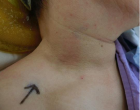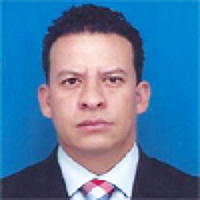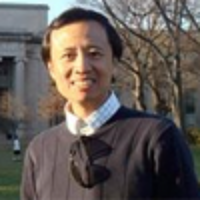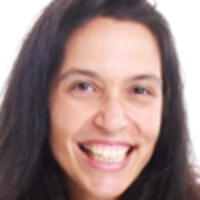Abstract
Case Report
Hypoglycemia by Ginseng in type 2 Diabetic Patient: Case Report
Angelo Michele Carella*, Teresa Marinelli, Armando Melfitano, Michele Di Pumpo, Matteo Conte and Angelo Benvenuto
Published: 09 February, 2017 | Volume 1 - Issue 1 | Pages: 001-006
Ginseng extracts are often used as adaptogen to improve mental performances and well being, helping to overcome stress. Thus, in our times a lot of ginseng extracts are continuously produced and sold into commercial channels. Both Asian and Korean red ginseng (Panax ginseng) and American ginseng (Panax quinquefolius) are the most extensively used and researched. Both Panax ginseng and Panax quinquefolium contain different types of saponins, also known as ginsenosides, which are the substances that give ginseng medicinal properties. Human and animal studies showed that ginseng extracts can also have hypoglycemic effects. The mechanisms by which ginseng reduces blood glucose levels are unclear; some mechanisms have been proposed to explain its hypoglycemic effect, especially modulating effects on insulin sensitization and/or insulin secretion and regulating actions on digestion and intestinal absorption. We describe a case of hypoglycemia by ginseng in type 2 diabetic patient treated with oral hypoglycemic agents. Although, in order to provide better assessments of a sure anti-diabetic efficacy of ginseng, larger and longer randomized controlled clinical trials will be required, in our case we think that we have enough evidence to believe that the cause of hypoglycemia was ginseng. Obviously, this report should not be taken as a proof of the hypoglycemic effect of ginseng, nor it wants to be a suggestion to use ginseng in the treatment of diabetes; instead, it wants to be an alert for patients and clinicians to avoid hypoglycemia in daily clinical practice.
Read Full Article HTML DOI: 10.29328/journal.hodms.1001001 Cite this Article Read Full Article PDF
Keywords:
Ginseng; Hypoglycemia; Type 2 diabetes mellitus
References
- Christensen LP. Ginsenosides chemistry, biosynthesis, analysis, and potential health effects. Adv Food Nutr Res. 2009; 55: 1-99. Ref.: https://goo.gl/rnMBwu
- Baeg IH, So SH. The world ginseng market and the ginseng (Korea). J Ginseng Res. 2013; 37: 1-7. Ref.: https://goo.gl/Y3hfc3
- Oshima Y, Sato K, Hikino H. Isolation and hypoglycemic activity of quinquefolans A, B, and C, glycans of Panax quinquefolium roots. J Nat Prod. 1987; 50: 188-90. Ref.: https://goo.gl/J0u0MP
- Martinez B, Staba EJ. The physiological effects of Aralia, Panax and Eleutherococcuson exercised rats. Jpn J Pharmacol. 1984; 35: 79-85. Ref.: https://goo.gl/10yCDs
- Ohnishi Y, Takagi S, Miura T, Usami M, Kako M, et al. Effect of ginseng radix on GLUT2 protein content in mouse liver in normal and epinephrineinduced hyperglycemic mice. Biol Pharm Bull. 1996; 19: 1238-1240. Ref.: https://goo.gl/7I2DWv
- Sotaniemi EA, Haapakoski E, Rautio A. Ginseng therapy in noninsulin-dependent diabetic patients. Diabetes Care. 1995; 18: 1373-1375. Ref.: https://goo.gl/lC0gPu
- Vuksan V, Sieveniper JL, Koo VYY, Thomas Francis, Uljana Beljan-Zdravkovic, et al. American ginseng reduces postprandial glycemia in nondiabetic and diabetic individuals. Arch Intern Med. 2000; 160: 1009-1013. Ref.: https://goo.gl/kJwYrb
- Vuksan V, Stavro MP, Sievenpiper JL, Beljan-Zdravkovic U, Leiter LA, et al. Similar postprandial glycemic reductions with escalation of dose and administration time of American ginseng in type 2 diabetes. Diabetes Care. 2000; 23: 1221-1226. Ref.: https://goo.gl/WZefoA
- Vuksan V, Sievenpiper JL, Wong J, Zheng Xu, Uljana Beljan-Zdravkovic, et al. American ginseng (Panax quinquefolius L.) attenuates postprandial glycemia in a time-dependent but not dose-dependent manner in healthy individuals. Am J Clin Nutr. 2001; 73: 753-758. Ref.: https://goo.gl/2Jaayp
- Vuksan V, Sung MK, Sievenpiper JL, Stavro PM, Alexandra LJ, et al. Korean red ginseng (Panax ginseng) improves glucose and insulin regulation in well-controlled, type 2 diabetes: results of a randomized, double-blind, placebo-controlled study of efficacy and safety. Nutr Metab Cardiovasc Dis. 2008; 18: 46-56. Ref.: https://goo.gl/JAJF3B
- Ma SW, Benzie IF, Chu TT, Fok BSP, Tomlinson B, et al. Effect of Panax ginsengsupplementation on biomarkers of glucose tolerance, antioxidant status and oxidative stress in type 2 diabetic subjects: results of a placebo-controlled human intervention trial. Diabetes Obes Metab. 2008; 10: 1125-1127. Ref.: https://goo.gl/SkMNQB
- Sievenpiper JL, Arnason JT, Vidgen E, Lawrence LA, Vladimir V. A systematic quantitative analysis of the literature of the high variability in ginseng (Panax spp.): should ginseng be trusted in diabetes? Diabetes Care. 2004; 27: 839-840. Ref.: https://goo.gl/sxrgqn
- Shishtar E, Sievenpiper JL, Djedovic V, Adrian IC, Vanessa Ha, et al. The effect of ginseng (the genus panax) on glycemic control: a systematic review and meta-analysis of randomized controlled clinical trials. PLoSOne. 2014; 9: e107391. Ref.: https://goo.gl/7C08W5
- Zonszein J, Groop PH. Strategies for Diabetes Management: Using Newer Oral Combination Therapies Early in the Disease. Diabetes Ther. 2016; 7: 621-639. Ref.: https://goo.gl/9RRI9M
- Hasegawa H, Matsumiya S, Murakami C, Tomonori K, Ryoji K, et al. Interactions of ginseng extract, ginseng separated fractions, and some triterpenoid saponins with glucose transporters in sheep erythrocytes. Planta Med. 1994; 60: 153-157. Ref.: https://goo.gl/RHV1vb
- Kimura M, Waki I, Chujo T, Takeo K, Chizuko H, et al. Effects of hypoglycemic components in ginseng radix on blood insulin level in alloxan diabetic mice and on insulin release from perfused rat pancreas. J Pharmacobiodyn. 1981; 4: 410-417. Ref.: https://goo.gl/NE4RvE
- Yuan CS, Wu JA, Lowell T, Maojian G. Gut and brain effects of American ginseng root on brainstem neuronal activities in rats. Am J Chin Med. 1998; 26: 47-55. Ref.: https://goo.gl/AYKG8x
- Suzuki Y, Ito Y, Konno C, Furuya T. Effects of tissue cultured ginseng on gastric secretion and pepsin activity. Yakugaku Zasshi. 1991; 111: 770-774. Ref.: https://goo.gl/SNJGsY
- Attele AS, Wu JA, Yuan CS. Ginseng pharmacology: multiple constituents and multiple actions. Biochem Pharmacol. 1999; 58: 1685-1693. Ref.: https://goo.gl/P4SNWq
- Spinas GA, Laffranchi R, Francoys I, David I, Richter C, et al. The early phase of glucose-stimulated insulin secretion requires nitric oxide. Diabetologia. 1998; 41: 292-299. Ref.: https://goo.gl/KRl5SX
- Gillis CN. Panax ginseng pharmacology: a nitric oxide link? Biochem Pharmacol. 1997; 54: 1-8. Ref.: https://goo.gl/lmovHd
- Kim JJ, Xiao H, Tan Y, Zhong ZW, Seale JP, et al. The effects and mechanism of saponins of Panax notoginsengon glucose metabolism in 3T3-L1 cells. Am J Chin Med. 2009; 37: 1179-1189. Ref.: https://goo.gl/U4K5Fk
- Kim DY, Yuan HD, Huang B, Hai YQ, Sung HC. Ginsenoside 20(R)-Rg3 stimulates glucose uptake in C2C12 myotubes via CaMKK-AMPK pathways. Food Sci Biotechnol. 2010; 19: 1277-1282. Ref.: https://goo.gl/rGja1K
- Han KL, Jung MH, Sohn JH, Hwang JK. Ginsenoside 20S-protopanaxatriol (PPT) activates peroxisome proliferator- activated receptor gamma (PPARgamma) in 3T3-L1 adipocytes. Biol Pharm Bull. 2006; 29: 110-113. Ref.: https://goo.gl/C0A3pR
- Lee HJ, Lee YH, Park SK, Kang ES, Jeong HK, et al. Korean red ginseng (Panax ginseng) improves insulin sensitivity and attenuates the development of diabetes in Otsuka Long-Evans Tokushima fatty rats. Metabolism. 2009; 58: 1170-1177. Ref.: https://goo.gl/17RQGj
- Quan HY, Yuan HD, Jung MS, Ko SK, Park YG, et al. Ginsenoside Re lowers blood glucose and lipid levels via activation of AMP-activated protein kinase in HepG2 cells and high-fat diet fed mice. Int J Mol Med. 2012; 29: 73-80. Ref.: https://goo.gl/TA9CBo
- Kim SJ, Yuan HD, Chung SH. Ginsenoside Rg1 suppresses hepatic glucose production via AMP-activated protein kinase in HepG2 cells. Biol Pharm Bull. 2010; 33: 325-328. Ref.: https://goo.gl/PFYfj1
- Han GC, Ko SK, Sung JH, Chung SH. Compound K enhances insulin secretion with benefi cial metabolic effects in db/db mice. J Agric Food Chem. 2007; 55: 10641-10648. Ref.: https://goo.gl/4qeDbr
- Yuan HD, Kim SJ, Chung SH. Benefi cial effects of IH- 901 on glucose and lipid metabolisms via activating adenosine monophosphate-activated protein kinase and phosphatidylinositol-3 kinase pathways. Metabolism. 2011; 60: 43-51. Ref.: https://goo.gl/OGWTZI
- Yuan HD, Kim DY, Quan HY, Kim SJ, Jung MS, et al, Chung SH. Ginsenoside Rg2 induces orphan nuclear receptor SHP gene expression and inactivates GSK3β via AMPactivated protein kinase to inhibit hepatic glucose production in HepG2 cells. Chem Biol Interact. 2012; 195: 35-42. Ref.: https://goo.gl/975l83
- Yokozawa T, Kobayashi T, Oura H, Kawashima Y. Stimulation of lipid and sugar metabolism in ginsenoside-Rb2 treated rats. Chem Pharm Bull. 1984; 32: 2766-2772. Ref.: https://goo.gl/EO6g9R
- Yokozawa T, Kobayashi T, Oura H, Kawashima Y. Studies on the mechanism of the hypoglycemic activity of ginsenoside-Rb2 in streptozotocin-diabetic rats. Chem Pharm Bull. 1985; 33: 869-872. Ref.: https://goo.gl/0AOoqd
- Luo JZ, Luo L. American ginseng stimulates insulin production and prevents apoptosis through regulation of uncoupling protein-2 in cultured beta cells. Evid Based Complement Alternat Med. 2006; 3: 365-372. Ref.: https://goo.gl/Fi0stu
- Kim HY, Kim K. Protective effect of ginseng on cytokineinduced apoptosis in pancreatic beta-cells. J Agric Food Chem. 2007; 55: 2816-2823. Ref.: https://goo.gl/0FSoOr
- Choi YS, Han GC, Han EJ, Park KJ, Park JS, et al. Antidiabetic activity of IH-901 in db/db mice. Yakhak Hoeji. 2006; 50: 345-350. Ref.: https://goo.gl/70N7Ow
- Onomura M, Tsukada H, Fukuda K, Masaya H, Hiroshi N, et al. Effects of ginseng radix on sugar absorption in the small intestine. Am J Chin Med. 1999; 27: 347-354. Ref.: https://goo.gl/ac5YP5
- Reay JL, Scholey AB, Milne A, Fenwick J, David OK. Panax ginseng has no effect on indices of glucose regulation following acute or chronic ingestion in healthy volunteers. Br J Nutr. 2009; 101: 1673-1678. Ref.: https://goo.gl/keqZot
- Reeds DN, Patterson BW, Okunade A, John OH, Kenneth SP, et al. Ginseng and ginsenoside Re do not improve β-cell function or insulin sensitivity in overweight and obese subjects with impaired glucose tolerance or diabetes. Diabetes Care. 2011; 34: 1071-1076. Ref.: https://goo.gl/4FqdXR
Figures:
Similar Articles
-
Hypoglycemia by Ginseng in type 2 Diabetic Patient: Case ReportAngelo Michele Carella*,Teresa Marinelli,Armando Melfitano,Michele Di Pumpo,Matteo Conte,Angelo Benvenuto. Hypoglycemia by Ginseng in type 2 Diabetic Patient: Case Report . . 2017 doi: 10.29328/journal.hodms.1001001; 1: 001-006
Recently Viewed
-
Cystoid Macular Oedema Secondary to Bimatoprost in a Patient with Primary Open Angle GlaucomaKonstantinos Kyratzoglou*,Katie Morton. Cystoid Macular Oedema Secondary to Bimatoprost in a Patient with Primary Open Angle Glaucoma. Int J Clin Exp Ophthalmol. 2025: doi: 10.29328/journal.ijceo.1001059; 9: 001-003
-
Navigating Neurodegenerative Disorders: A Comprehensive Review of Current and Emerging Therapies for Neurodegenerative DisordersShashikant Kharat*, Sanjana Mali*, Gayatri Korade, Rakhi Gaykar. Navigating Neurodegenerative Disorders: A Comprehensive Review of Current and Emerging Therapies for Neurodegenerative Disorders. J Neurosci Neurol Disord. 2024: doi: 10.29328/journal.jnnd.1001095; 8: 033-046
-
Obesity in Patients with Chronic Obstructive Pulmonary Disease as a Separate Clinical PhenotypeDaria A Prokonich*, Tatiana V Saprina, Ekaterina B Bukreeva. Obesity in Patients with Chronic Obstructive Pulmonary Disease as a Separate Clinical Phenotype. J Pulmonol Respir Res. 2024: doi: 10.29328/journal.jprr.1001060; 8: 053-055
-
Current Practices for Severe Alpha-1 Antitrypsin Deficiency Associated COPD and EmphysemaMJ Nicholson*, M Seigo. Current Practices for Severe Alpha-1 Antitrypsin Deficiency Associated COPD and Emphysema. J Pulmonol Respir Res. 2024: doi: 10.29328/journal.jprr.1001058; 8: 044-047
-
Clinical and Histopathological Mismatch: A Case Report of Acral FibromyxomaMonica Mishra*,Kailas Mulsange,Gunvanti Rathod,Deepthi Konda. Clinical and Histopathological Mismatch: A Case Report of Acral Fibromyxoma. Arch Pathol Clin Res. 2025: doi: 10.29328/journal.apcr.1001045; 9: 005-007
Most Viewed
-
Evaluation of Biostimulants Based on Recovered Protein Hydrolysates from Animal By-products as Plant Growth EnhancersH Pérez-Aguilar*, M Lacruz-Asaro, F Arán-Ais. Evaluation of Biostimulants Based on Recovered Protein Hydrolysates from Animal By-products as Plant Growth Enhancers. J Plant Sci Phytopathol. 2023 doi: 10.29328/journal.jpsp.1001104; 7: 042-047
-
Sinonasal Myxoma Extending into the Orbit in a 4-Year Old: A Case PresentationJulian A Purrinos*, Ramzi Younis. Sinonasal Myxoma Extending into the Orbit in a 4-Year Old: A Case Presentation. Arch Case Rep. 2024 doi: 10.29328/journal.acr.1001099; 8: 075-077
-
Feasibility study of magnetic sensing for detecting single-neuron action potentialsDenis Tonini,Kai Wu,Renata Saha,Jian-Ping Wang*. Feasibility study of magnetic sensing for detecting single-neuron action potentials. Ann Biomed Sci Eng. 2022 doi: 10.29328/journal.abse.1001018; 6: 019-029
-
Pediatric Dysgerminoma: Unveiling a Rare Ovarian TumorFaten Limaiem*, Khalil Saffar, Ahmed Halouani. Pediatric Dysgerminoma: Unveiling a Rare Ovarian Tumor. Arch Case Rep. 2024 doi: 10.29328/journal.acr.1001087; 8: 010-013
-
Physical activity can change the physiological and psychological circumstances during COVID-19 pandemic: A narrative reviewKhashayar Maroufi*. Physical activity can change the physiological and psychological circumstances during COVID-19 pandemic: A narrative review. J Sports Med Ther. 2021 doi: 10.29328/journal.jsmt.1001051; 6: 001-007

HSPI: We're glad you're here. Please click "create a new Query" if you are a new visitor to our website and need further information from us.
If you are already a member of our network and need to keep track of any developments regarding a question you have already submitted, click "take me to my Query."


















































































































































